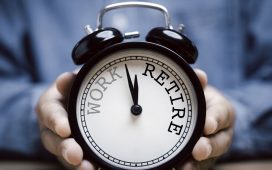As a record number of people head into the winter already in debt to their energy suppliers, the price cap that controls what households pay for gas and electricity is clearly no longer fit for purpose.
Even the energy regulator presiding over the cap, Ofgem’s Jonathan Brearley, has admitted the mechanism is “very broad and crude” and has called on ministers to implement a “more rigorous framework” to protect consumers. But the next step looks far from simple and the government does not appear to be giving the problem much thought.
On Friday, the regulator said annual bills for the average household would fall to £1,923 from October, compared to £2,074 the previous quarter – still almost double pre-energy crisis levels. They are forecast to rise again in January.
The cap, originally introduced to prevent loyal customers who didn’t switch supplier from paying more, appears to be the wrong tool for today’s crisis. As energy prices surged, it held prices down, and was blamed for sending 29 suppliers bust, leaving consumers with a £2.7bn tab. At the same time, it is set too high to help the estimated 6 million households who simply cannot afford to properly heat their homes.
The result was the forced installation of 600,000 prepayment meters last winter, a brutal practice that effectively left people with no choice but to self-disconnect.
Shamed into taking a different approach, most (though not all) suppliers have now joined charities and campaigners in supporting the idea of a social energy tariff.
On the face of it, the concept appears simple: offer a subsidised, below-cost price rate to low-income and vulnerable households.
However, the first hurdle comes in how to decide who gets the support, as last winter’s costly government handout of £400 per household was a blanket measure, which helped many who didn’t need it. Identifying households in need of help has proved difficult for energy suppliers.
“The datasets are poor,” says the chief executive of one supplier. “You might have two consumers on similar incomes, both living in council houses, but one has modern heating and proper insulation and another has faulty systems and concrete walls – their energy bills would be wildly different but would probably receive the same support.”
after newsletter promotion
Using data from the Department for Work and Pensions, or through universal credit, seems to be the most practical option.
Then there’s question of how it’s paid for. The simplest option would be to increase prices for everyone else, in a similar manner to the warm homes discount. However, this could force many more households just above the borderline into fuel poverty, pushing up their bills but leaving them bereft of the social tariff.
Alternatively, ministers could, as Liz Truss did, step in and fund the measure through general taxation or from government coffers. This would not endear the government to those calling for pre-election tax cuts.
Brearley made it clear on Friday that any decision on supporting households is in the government’s court. After an initial flurry of interest from the Treasury earlier this year (a team was examining what a successor to the energy price guarantee could look like) it is understood that enthusiasm for a social tariff has waned with the prospect of a general election on the horizon. Another industry chief put it bluntly: “The people who would benefit from a social tariff do not vote Conservative.”








